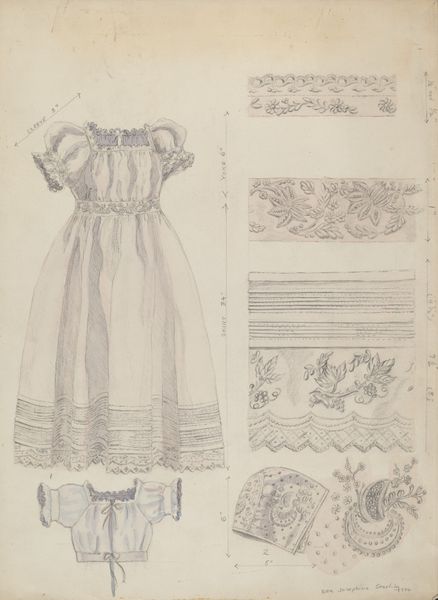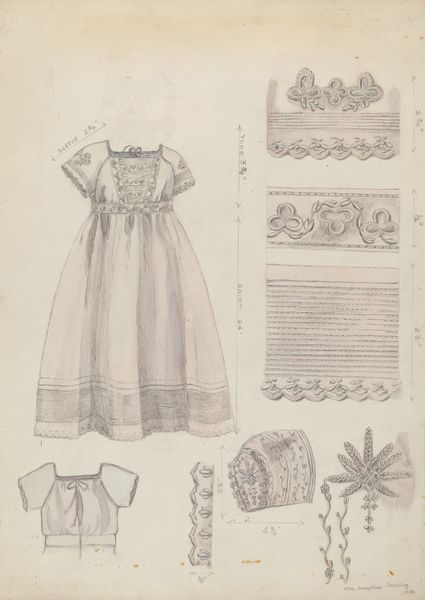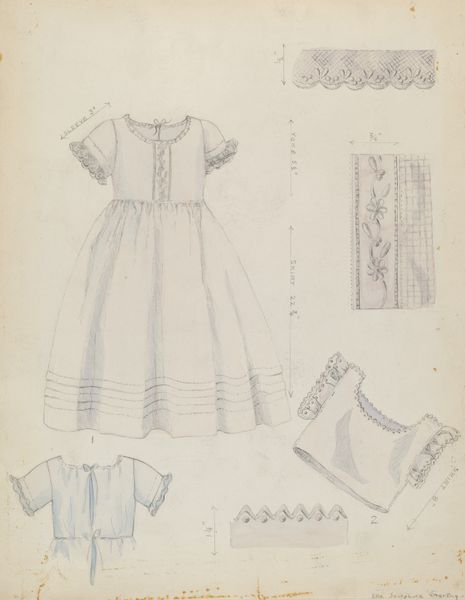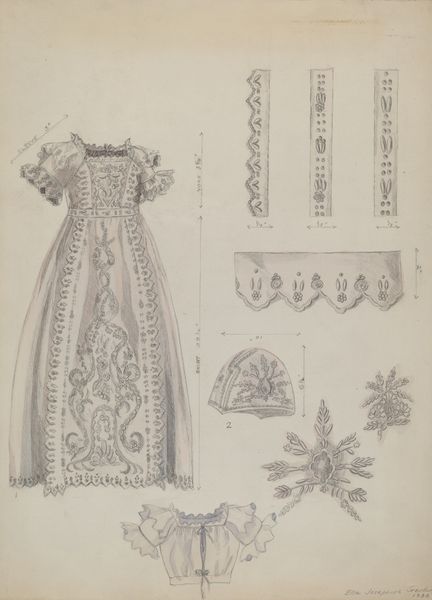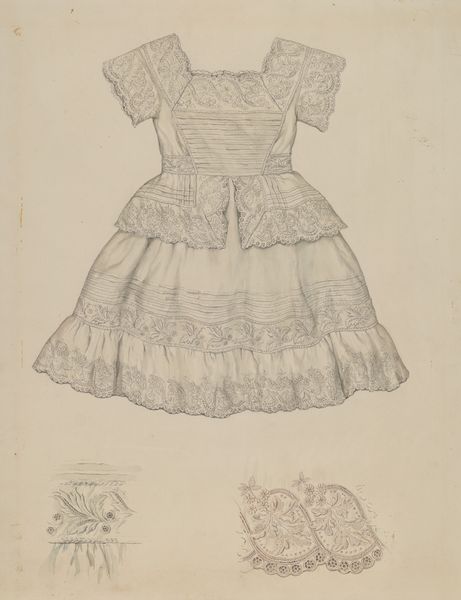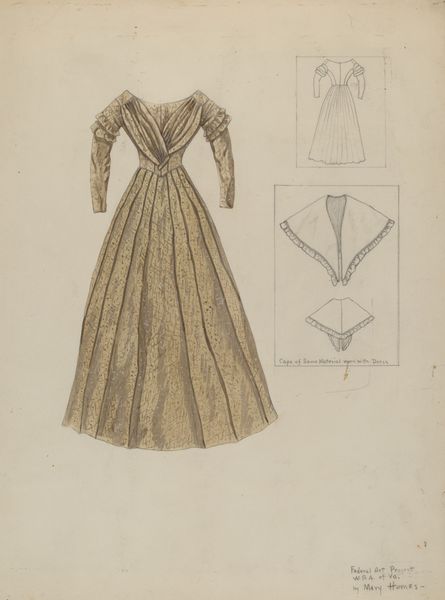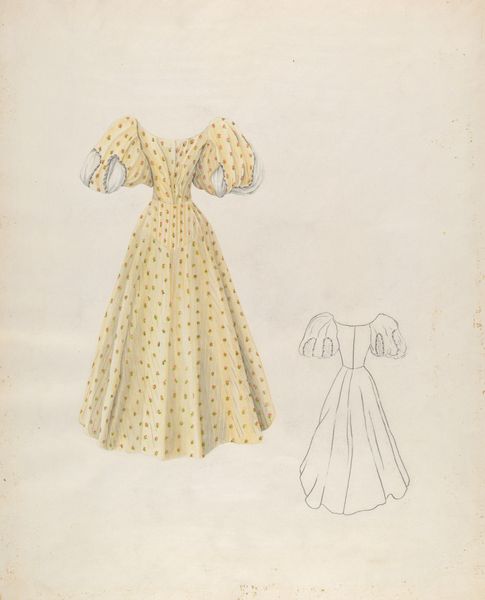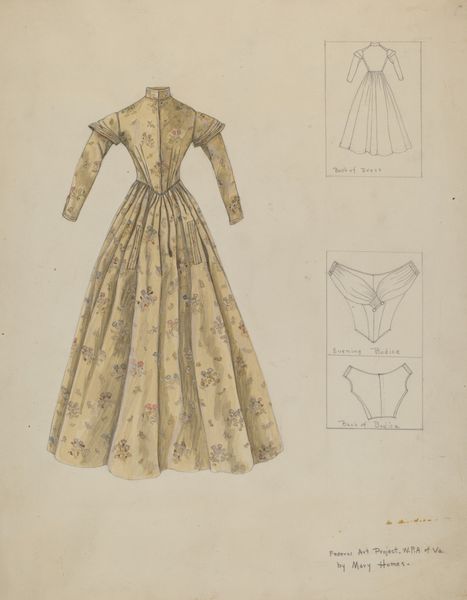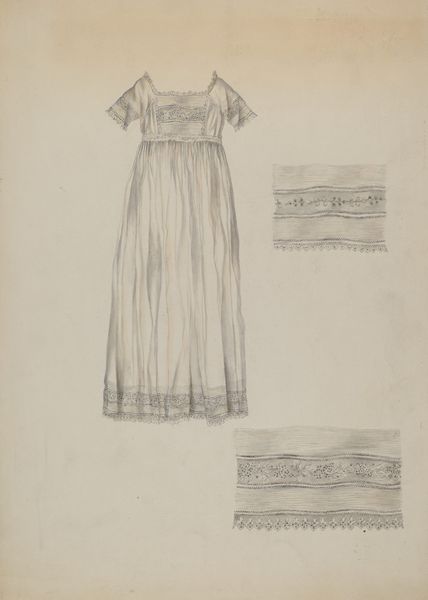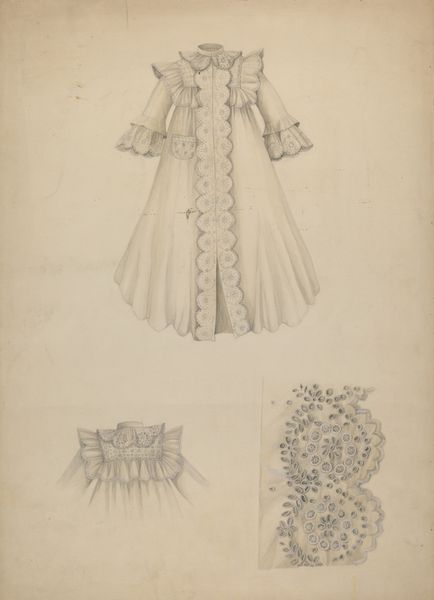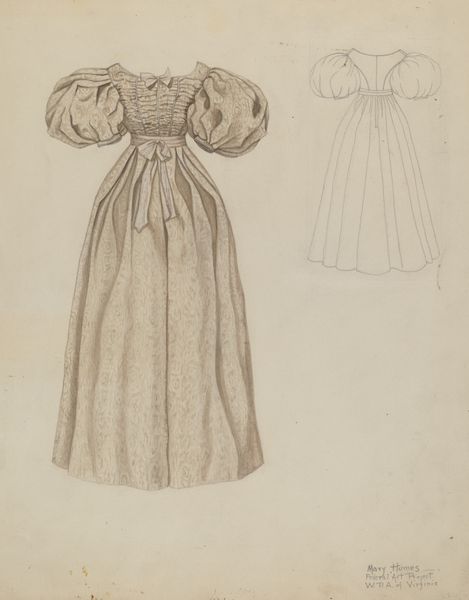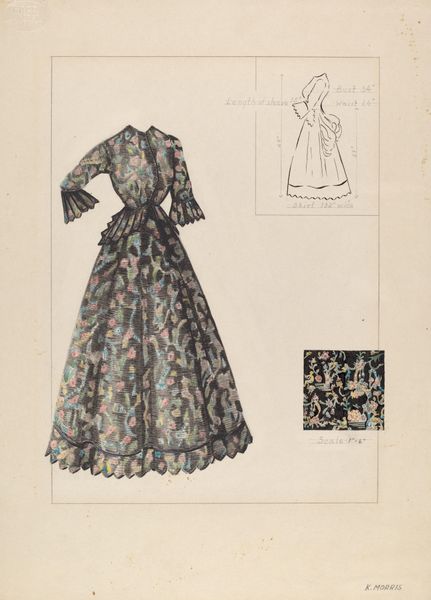
drawing, paper, pencil
#
portrait
#
drawing
#
paper
#
historical fashion
#
pencil
Dimensions: overall: 37 x 26.7 cm (14 9/16 x 10 1/2 in.)
Copyright: National Gallery of Art: CC0 1.0
Curator: Looking at this artwork, I immediately notice the careful detail, it’s intricate, it seems so delicate, it almost carries an aura of nostalgia. Editor: Indeed. This is Ella Josephine Sterling's "Christening Robe," drawn around 1936. The work appears to be executed with pencil on paper. What do you make of its imagery? Curator: Well, given the subject matter, I read significant symbolism into the use of floral patterns. They often stand for new life, innocence, a pure beginning… exactly what you’d wish for a child undergoing a christening. Editor: Fascinating! I am thinking more about the process implied here. These meticulously rendered bands of lace detail – they weren't mass-produced then like today. Someone invested significant labor in crafting this garment; look at those puff sleeves, those separate details to be attached later. It's more than just clothing; it is a product of social relations. Curator: That resonates. Beyond the sheer labour involved, there’s also that human element – the desire to pass something precious down, literally stitching love and hopes into a fabric to adorn an infant. Consider what baptism signifies: forgiveness, renewal, faith... the robe visually manifests these promises. Editor: The artist, in choosing pencil and paper, seems to emphasize both design and document, creating not just art but also instruction. You see how the method conveys knowledge about technique. The image functions as a guide; you could recreate the piece through visual interpretation. Curator: Absolutely. These meticulously rendered florals could be potent symbolic protectors, charms meant to watch over the baby during its formative stages. It’s as though visual history is stitched into the material itself, linking this new life to generations that preceded it. Editor: Seeing the scale annotations next to the lace detailing underscores the reality of making itself. Each little motif had to be individually planned and executed to ensure symmetry, and also that the components match each other well. Curator: When I look closely, I sense an act of preservation as much as celebration—preserving lineage through ritual and artistic representation. Editor: Well, reflecting on it further, the artwork illuminates the act of making visible the links between garment creation, class identity, and design history. Curator: A thoughtful meditation, thank you. I appreciate your thoughts as I revisit my perception on its purpose to find something deeply intimate within.
Comments
No comments
Be the first to comment and join the conversation on the ultimate creative platform.
